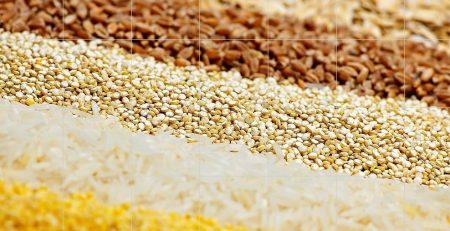USMEF Stresses Importance of Trade with Japan Amidst Steep Competition
The importance of Japan as a trading partner for U.S. agriculture was the focus of a Feb. 22 panel discussion at the USDA Agricultural Outlook Forum in Arlington, Va. U.S. Meat Export Federation (USMEF) Economist Erin Borror explained that Japan is the leading value destination for both U.S. beef and U.S. pork, with 2018 exports expected to reach $2.1 billion and $1.65 billion, respectively, when year-end data is available. But Borror also cautioned that the competitive terrain in Japan has gotten steeper for U.S. red meat due to Japan’s preferential trade agreements with Australia, the European Union, Canada, New Zealand, Mexico and Chile, and this situation will worsen unless the U.S. secures similar access terms with Japan.
Borror noted that U.S. beef export value per head of fed slaughter averaged a record $320.72 in 2018, up 14% year-over-year and shattering the previous high ($300.36) set in 2014. Japan accounts for one-fourth of this total, or $82.75 per head. The ratio is similar for U.S. pork export value, which averaged $51.46 per head slaughtered in 2018. Japan accounted for $13.18, or 26% of the total per-head value.
She also explained that beef and pork make up a significant portion of U.S. agricultural exports to Japan. The projected $3.92 billion in combined red meat product exports represent about 30% of the $13 billion in total U.S. ag exports to Japan, second only to grains and feeds.
Furthermore, Japan’s red meat consumption is likely to expand at a faster rate once the benefits of lower import duties are passed along to consumers. In South Korea, for example, the tariff rate on U.S. beef has dropped by more than half since 2012 under the Korea-U.S. Free Trade Agreement, and U.S. beef enjoys a tariff rate advantage over its competitors. Most pork from the U.S. and other major suppliers enters Korea at zero duty. Red meat is now more affordable and accessible for Korean consumers who have responded enthusiastically, with per capita consumption setting new records. A similar development in Japan will only benefit the U.S. beef and pork industries if they are on a level playing field with competitors.
Without a U.S.-Japan trade agreement, potential losses for the U.S. meat industry are substantial. On a per-head basis, Borror estimates lost export opportunities for U.S. beef will reach $18.70 by 2023 and $42 by 2028. For pork, the per-head loss is projected to be $4.55 by 2023 and $7.06 by 2028. U.S. exporters are already feeling the effects of tariff disadvantages of 11 percentage points for beef cuts and 6.4 percentage points for beef tongues and skirts. For pork, the most immediate impact is on processed and value-added products, where tariffs are quickly being phased to zero. This is already eroding U.S. market share for important products such as ground seasoned pork. Japan’s imports of U.S. ground seasoned pork were valued at $288 million last year.
“Unless the U.S. and Japan can quickly reach a trade agreement, lost opportunities will mount as Japanese companies seek more value-added, further processed products from suppliers such as the EU and Mexico,” Borror explained. “Decisions that are being made today will transform the business and without clear indications that the U.S. and Japan will reach an agreement, the U.S. industry is likely to suffer permanent losses in market share and related investment. Japan is irreplaceable as a trading partner, given its demand for high-value chilled pork cuts, and it is seen as an increasingly important market for value-added pork. At a time when U.S. companies are looking to produce more value-added and branded products, the industry cannot afford to miss these opportunities in Japan.”
These lost export opportunities also carry serious implications for U.S. agriculture and the rural economy. Exports to Japan are estimated to directly support more than 4 percent of the jobs in the meat packing and processing industry. Absent a trade agreement with Japan, an annual cost of $5.2 billion in direct economic losses to other businesses and industries will result in the top 15 meat packing and processing states. Over the next 10 years, an estimated 23,600 jobs outside the meat industry would be lost in those 15 states.
Joining Borror on the discussion panel were Jeffrey Schott, senior fellow at the Peterson Institute for International Economics, and Ben Conner, vice president of policy for U.S. Wheat Associates.
Borror also addressed the USDA Outlook Forum on Feb. 21, covering a range of topics impacting global red meat trade. These included the spread of African swine fever (ASF) in China, which has the potential to increase China’s need for imported pork. ASF’s expansion in Europe also impacts global trade, as some countries have suspended imports from European Union member states in which ASF is confirmed.
Borror also detailed the impact of ongoing trade disputes on U.S. red meat exports, including imposition of retaliatory duties on U.S. pork by China and Mexico. China also increased the duty rate for U.S. beef last year, and Canada imposed retaliatory duties on prepared beef products imported from the United States.
Retaliation has weighed less heavily on U.S. beef exports, which were record-large in 2018 and surged by more than $1 billion over the previous year. Pork export volume held steady with the record pace of 2017, but export value was pressured greatly in the second half of the year, following retaliatory actions by China and Mexico. Borror explained the retaliatory tariffs have been paid by the U.S. pork industry as prices for hams, picnics, feet and hocks – key items for export to Mexico and China – were down an average of about 20% from June through December last year, and this translated into year-over-year losses of $11.75 per head. Industry losses, just for these products, amounted to $860 million.
Content within the Farm Journal Forum is the property of Farm Journal, Inc and protected by copyright.This article was first published on https://www.fjfnews.com.










